Windmill
Explore the scientific concepts of forces and motion, renewable energy, energy capture, storage and use.
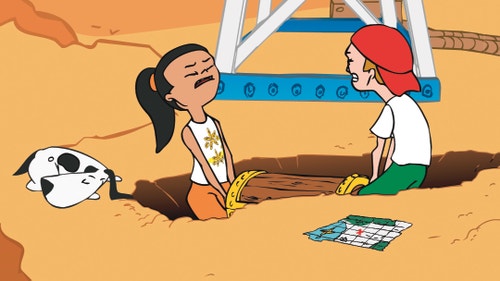
Connect
(5-10 Minutes)
Jack and Jill have found a huge but heavy treasure chest buried near an old mine. It is really heavy and though they try as hard as they can, they can’t pull it out of the hole.
The old windmill nearby once used to lift water out of the mine and they are wondering if it can be of any help to them.
Zog the Dog has done a very good job helping them to dig out the treasure chest so he is pretty tired too. He walks away from Jack and Jill to rest a bit and suddenly finds a long piece of rope. He runs back to the two kids to suggest that they take him for a walk on his new “leash”.
Jack has once seen a film where a mill was used to lift up something and seeing the rope he immediately tells Jill about his idea. Now they know they can figure out how to get the treasure out of the hole!
How can you use a windmill and a rope to lift a heavy load?
Let’s find out!
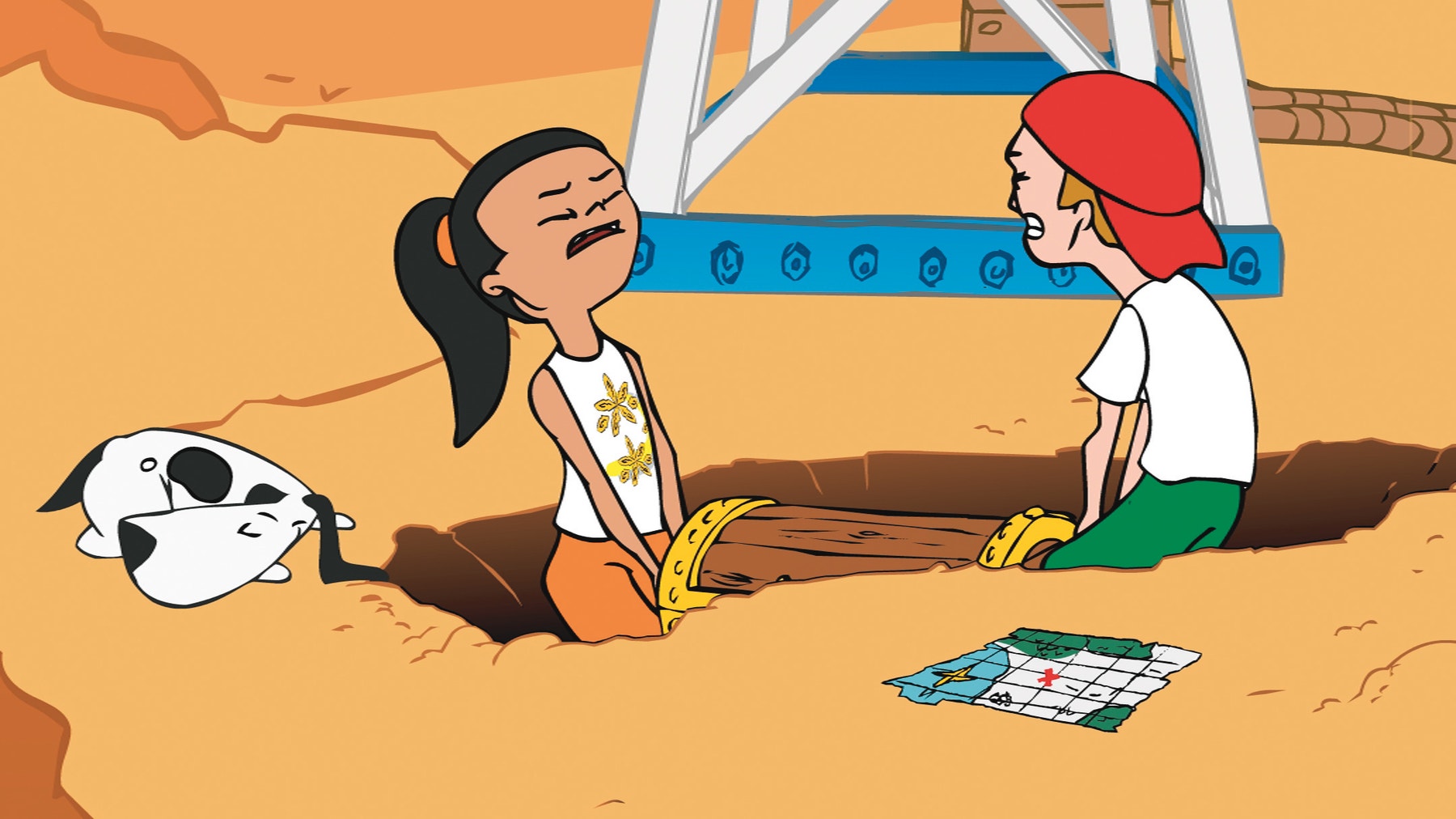
Construct
(20-25 Minutes)
Build the Windmill
(all of book 8A and book 8B to page 12, step 17)
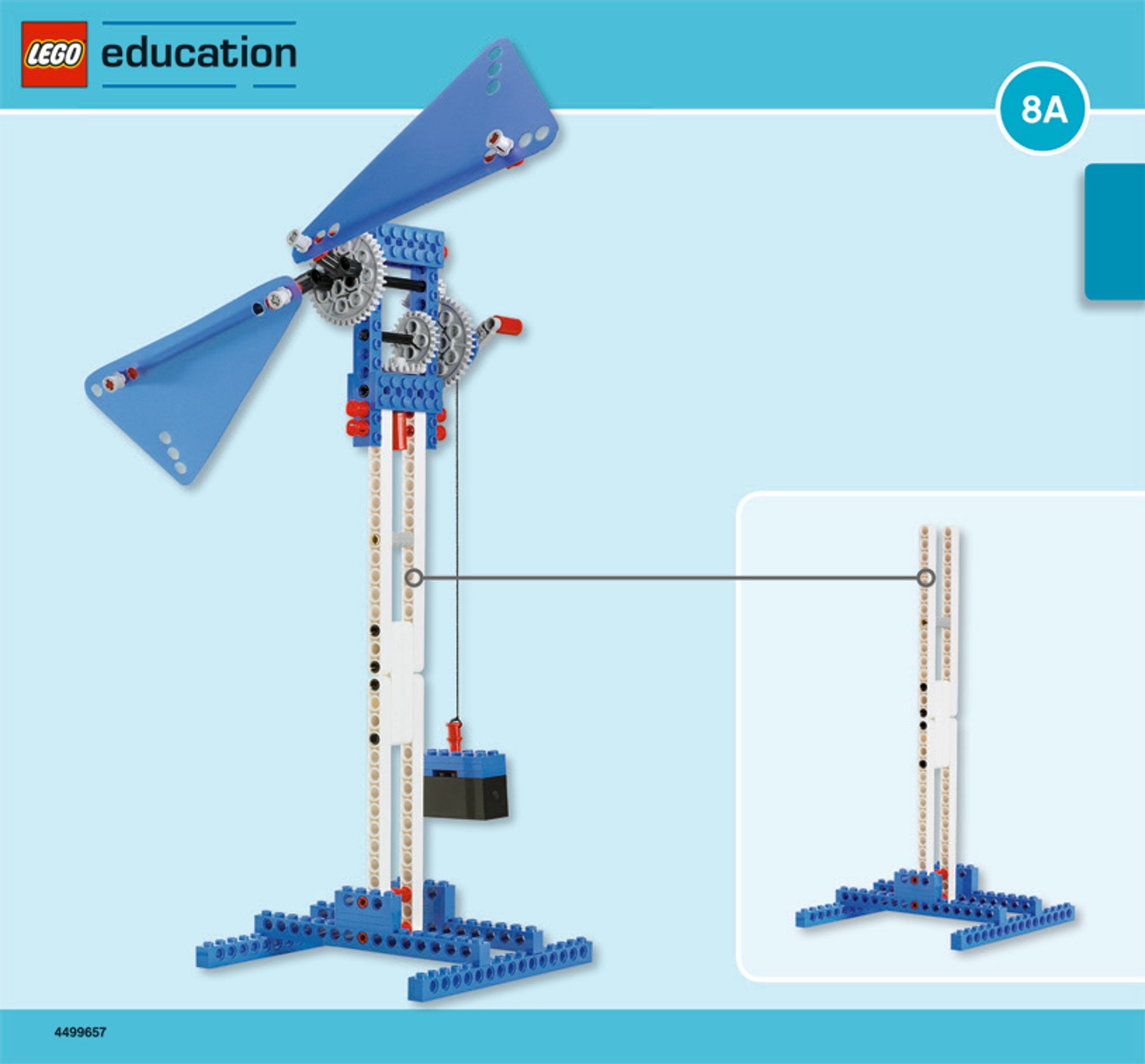
Spin the mill by hand. Is it running smoothly?
If it feels stiff to turn, loosen the axle bushings and make sure all other elements fit tightly together.
Setting up the Windmill
Position the fan on the floor near a power outlet.
Place the model about 2 m (≈ 2 yd) away from the fan.
Choose a power setting, and move the model back and forth to find a distance where the wind speed is just enough to lift the weight brick, slowly.
KEEP THIS POWER SETTING FOR ALL TESTS (until you want to test the effects of different wind speeds, of course).
Make a long line (e.g. with tape) in front of the windmill. This is the test zone (where it is safe), and behind the line several groups can test several mills at the same time.
Check that all the windmills are getting the same amount of wind.
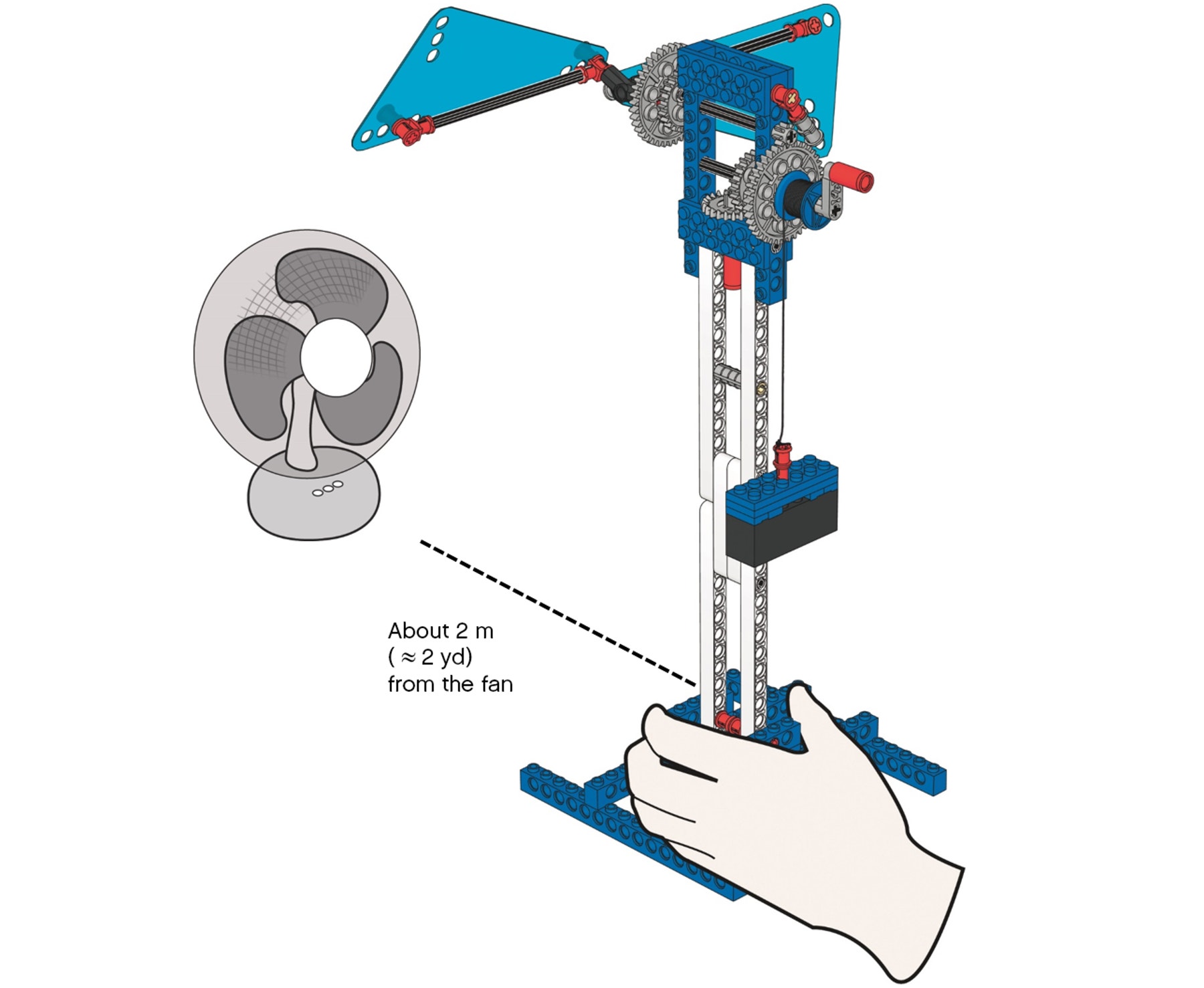
Contemplate
(20-25 minutes)
What is the best number of sails to use?
Predict and test which combination will lift up the treasure chest (weight brick) most quickly.
Can you explain why?
Example 3 is best. It has the most area in which to catch the wind energy.
Surprise!
Example 2 with the sails off-center is usually the worst. It is too unbalanced to work efficiently even though it has more area than Example 1 with just two sails.
Idea:
Does shape matter? If you have time, try making sails of different shaped pieces of card, but with the same area as that used in your models.
Note:
Each sail has an area of approx. 40 cm (≈ 15.7 in)2.

What does the ratchet do when:
The load is being lifted up and the wind stops?
The mill stops but the ratchet stops the heavy load from falling — a good safety feature.
The wind is blowing and you flip the ratchet to this position?
The mill stalls. The forces are opposite.
The load is up, the wind stops, and you flip the ratchet to this position?
It will become a fan powered by the energy stored in the falling load. You get the wind back again!
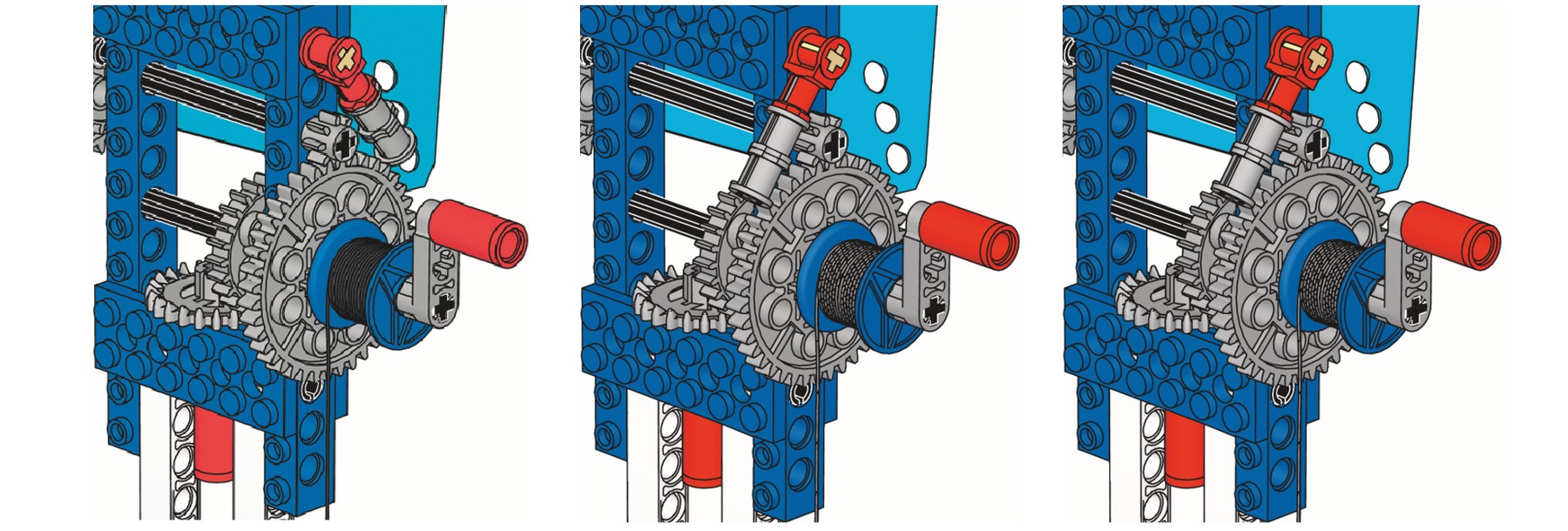
Rubber Band Force Meter
Tie a rubber band to the lifting string or use a spring balance to measure the lifting force before the mill stalls. Measure how much it stretches. You’ll be amazed by the power generated!
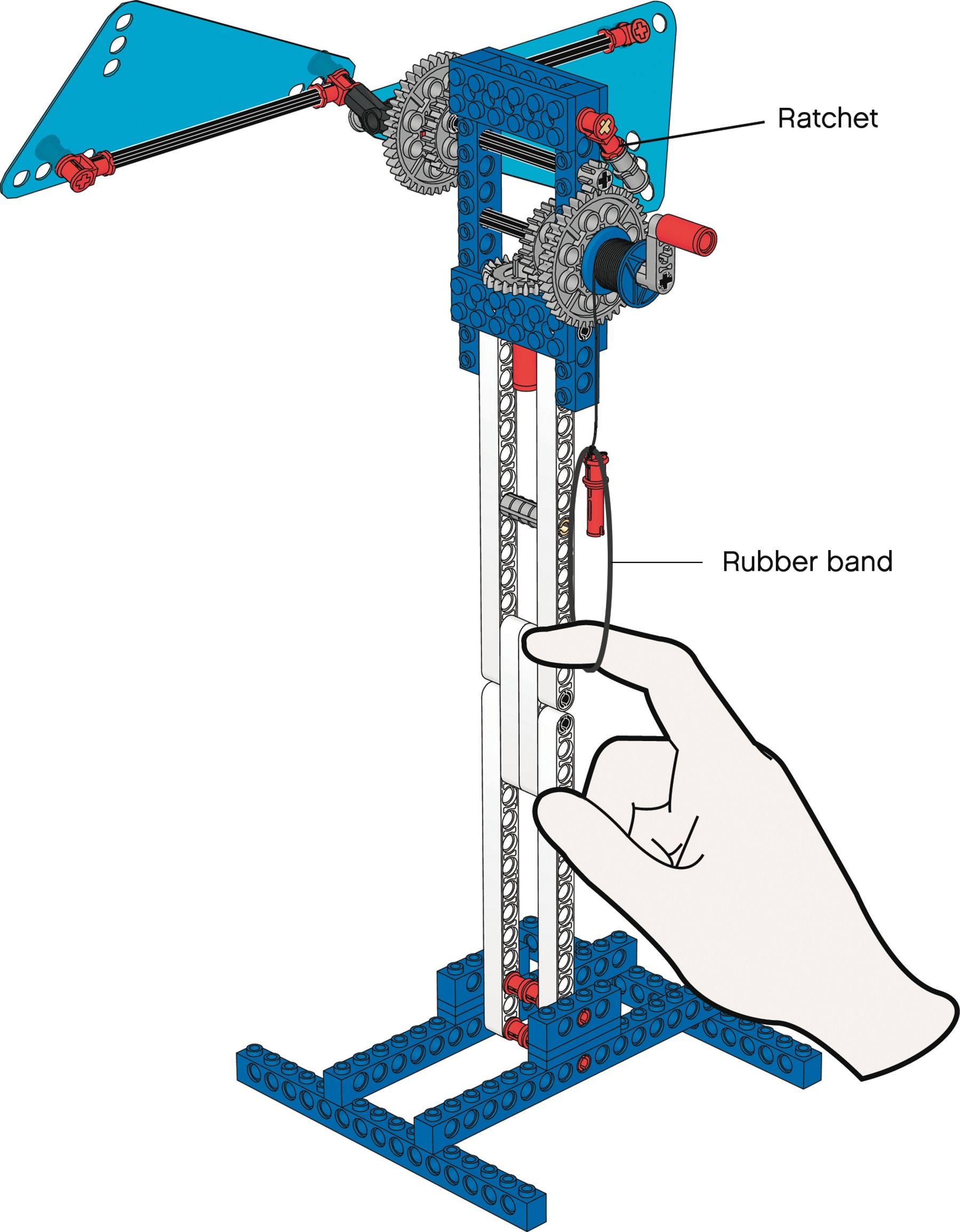
Continue
(25-30 Minutes)
In a spin!
How can we store and use energy later?
In this exercise we are actually cranking the weight up by hand. You can do it using wind power too, of course, if you then take off the sails before releasing the top.
Disconnect the gearbox as in page 14, step 1 and make the three different spinning tops page 14, step 16.
Did you know?
The different spinning tops weigh approx.:
2 g (≈ 0.1 oz)
8 g (≈ 0.28 oz)
16 g (≈ 0.5 oz)

Crank up the weight (adding energy) and flip the ratchet to hold the weight up (store the energy).
Connect a spinning top.
Position the weight so it will fall over the edge of a table.
Flip the ratchet to release the energy in the weight brick so it spins the top.
Lift to release the spinning top.
This takes skill so be patient.
Which top will spin the longest and why?
Predict and test more times with each spinner.
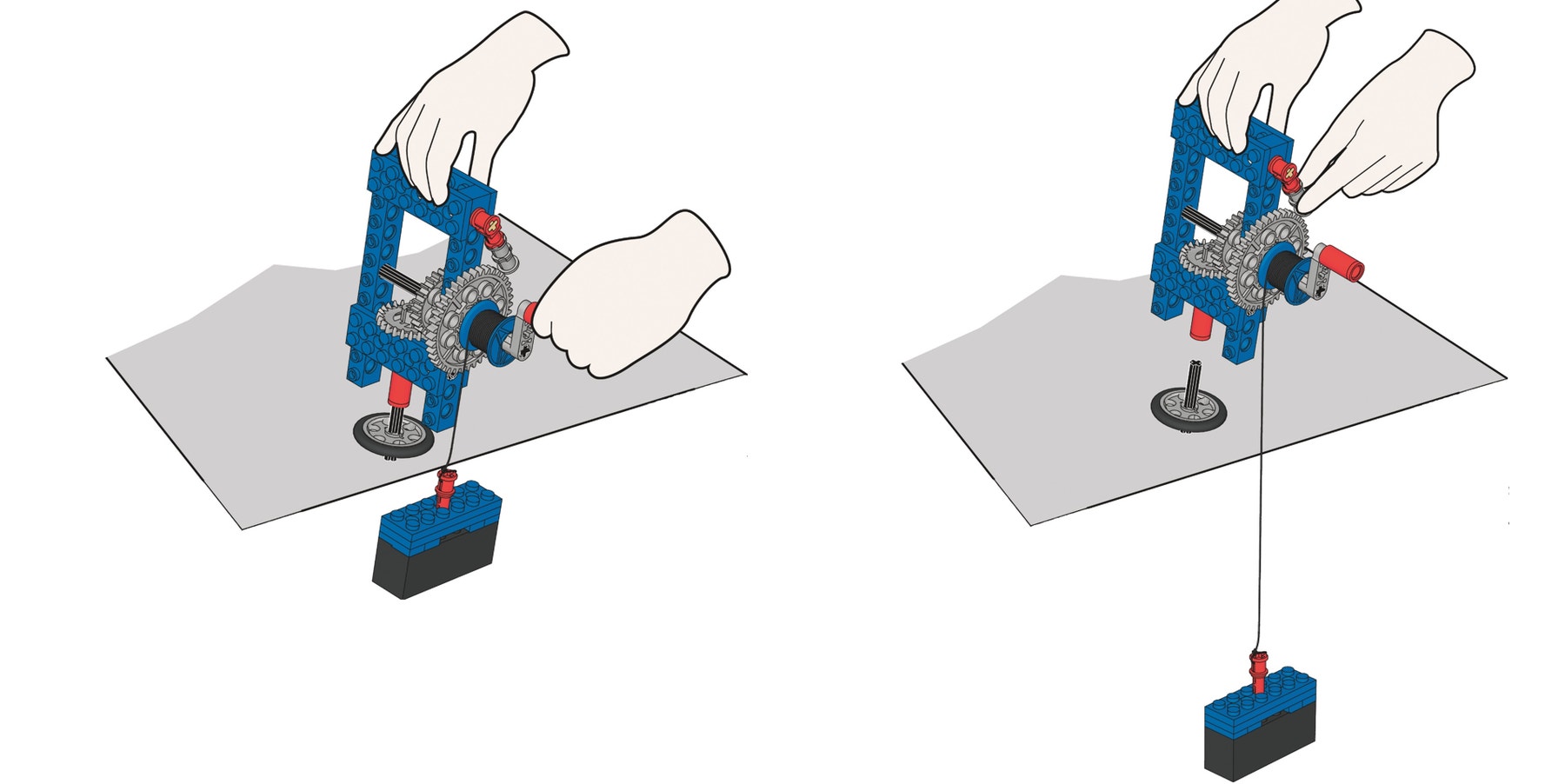
More Spins
Invent your own spinners to see if you can get even more speed and longer spinning times.
Invent your own spinning games and introduce your very own scoring system.
Teacher Support
Students will explore the concepts of:
Mechanisms – gearing up and down
Ratchets
Safety and control systems
Forces and motion
Renewable energy
Measuring weight
Measuring time
Force
Fair testing
Energy capture, storage and use
Scientific investigation
9686 Simple & Powered Machines Set (two students per set recommended)
Wind or desk fan
Brass weights or play dough
Stopwatch or other form of timer with a second hand
Optional: card and scissors to make own sails for the windmill
NGSS
Disciplinary Core Ideas: Physical science
MS-PS3 Energy
Crosscutting Concepts
Energy and matter
Science and Engineering Practices
Developing and using models
Planning and carrying out investigations
Obtaining, evaluating, and communicating information
Common Core Mathematics Standards
7.RP.A / 6.NS.B / 6.EE.C / 7.EE.B / 8.EE.B / 8.F.B / 6.SP.A
Common Core English Language Arts
SL 6.1 / 6.2 / 7.1 / 7.4 / 8.1
RST 6-8.3 / 6-8.4 / 6-8.7
WHST 6-8.1 / 6-8.7 / 6-8.8 / 6-8.9
Student Material
Share with:
 Google Classroom
Google Classroom



